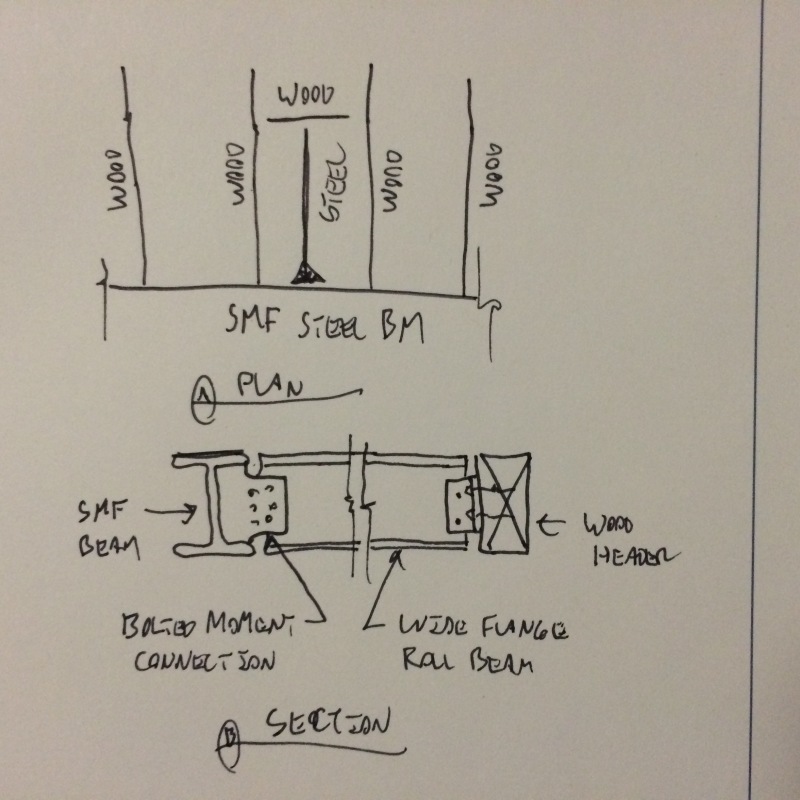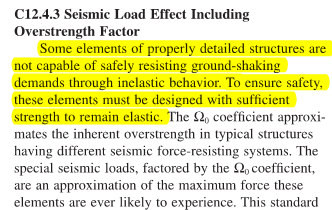I'm curious about how to brace the hinge points in a Reduced Beam Flange Special Moment Frame with a wood diaphragm. I've seen a lot of steel angle braces back to the wood diaphragm, but it doesn't seem like the wood diaphragm will be able to resist the code required brace load (6% of beam flange strength). This is especially a concern when the MF is installed at the front of the building, where there is diaphragm at one side only. What are some other details designers have used that can be shown to work for the code required brace load?
In most of our residential wood frame projects, the MF design is controlled by drift, and the actual member stress is very low, with D/C ratio of 0.25 to 0.4. This implies that if I apply the Omega level load, the MF will still remain elastic, and the hinge will not develop. If so, is there a rationale for reducing the brace load at the hinge locations, or simply not brace the hinge points, since the hinge will not form under Omega level load?
The above also lead to the question that if a SMF remains elastic, is it essentially behaving like an OMF with the built-in safety mechanisms? The drift calculation for SMF (Cd/R=0.688)is significantly lower than OMF (Cd/R=0.857). Is the SMF drift calculation accurate, if it is behaving like an OMF?
Thanks in advance,
Stan
In most of our residential wood frame projects, the MF design is controlled by drift, and the actual member stress is very low, with D/C ratio of 0.25 to 0.4. This implies that if I apply the Omega level load, the MF will still remain elastic, and the hinge will not develop. If so, is there a rationale for reducing the brace load at the hinge locations, or simply not brace the hinge points, since the hinge will not form under Omega level load?
The above also lead to the question that if a SMF remains elastic, is it essentially behaving like an OMF with the built-in safety mechanisms? The drift calculation for SMF (Cd/R=0.688)is significantly lower than OMF (Cd/R=0.857). Is the SMF drift calculation accurate, if it is behaving like an OMF?
Thanks in advance,
Stan


